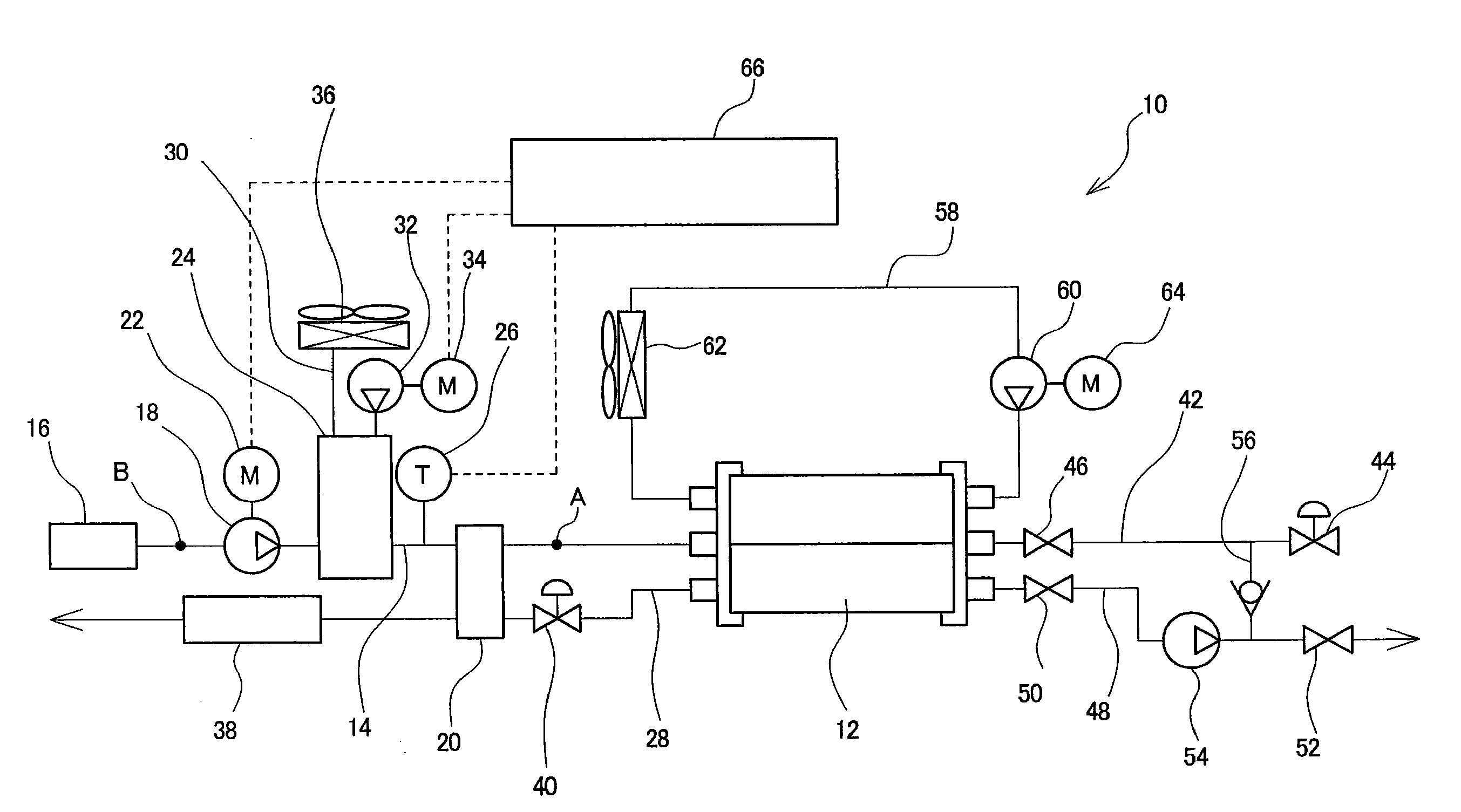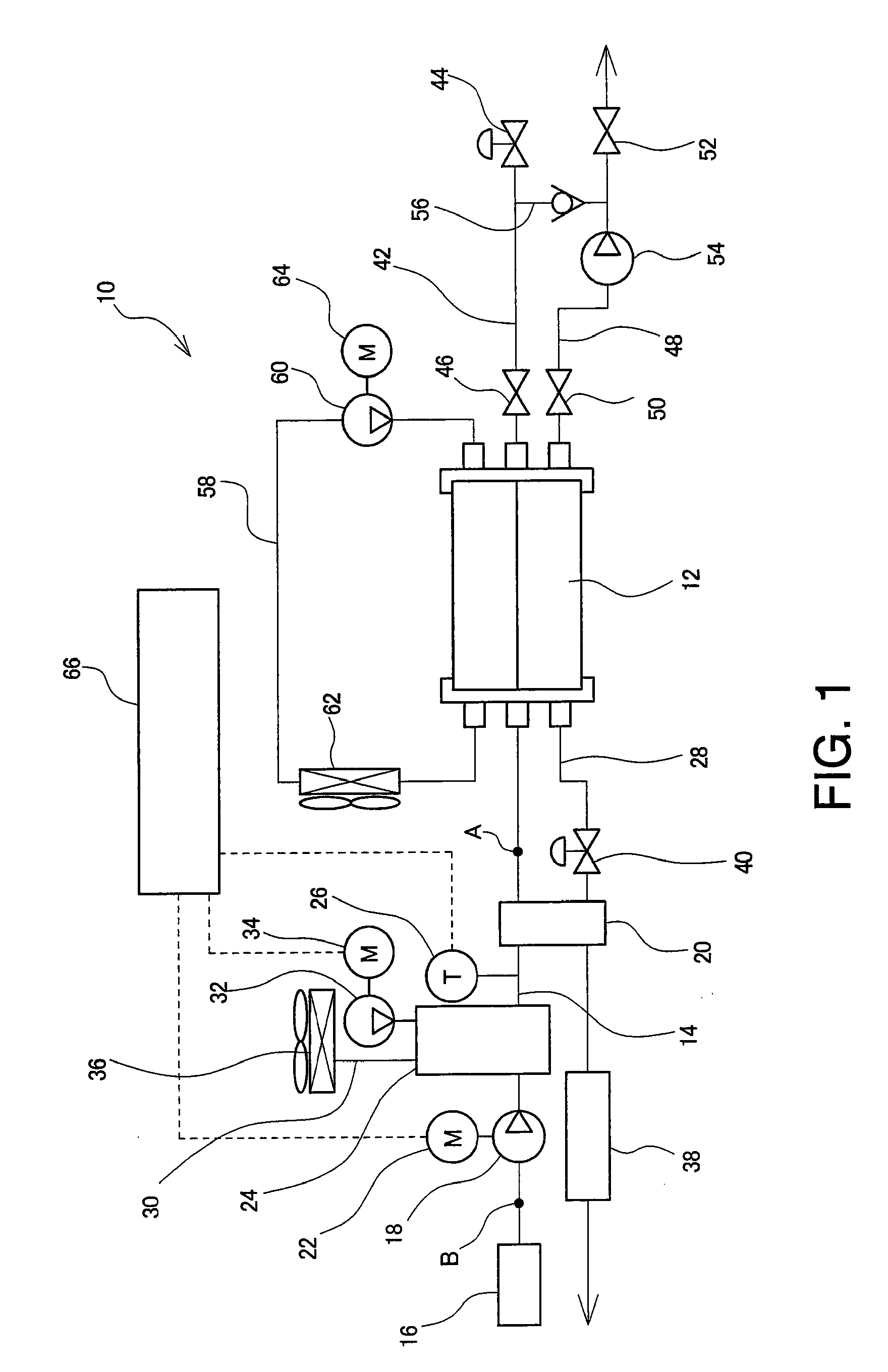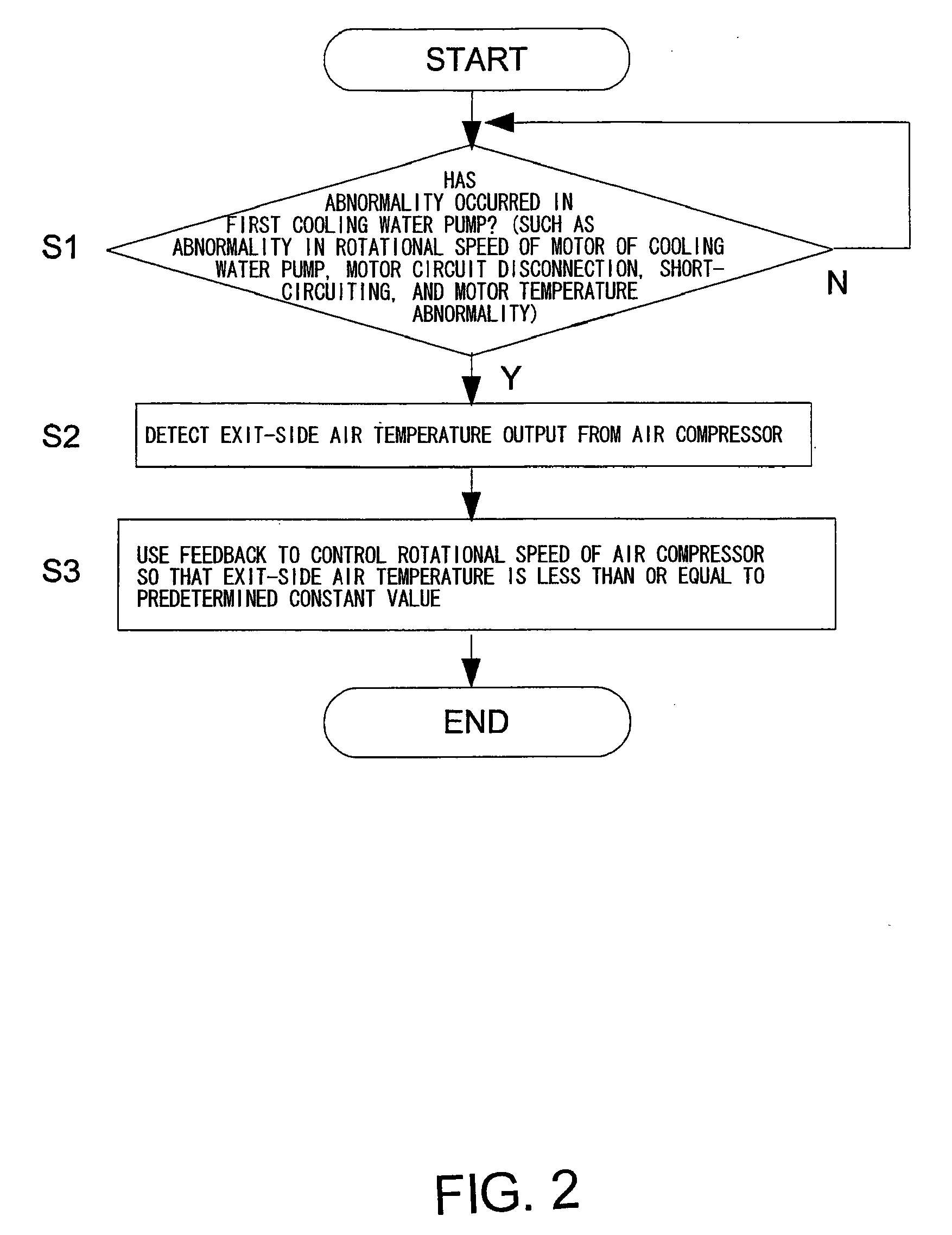Fuel cell system
a fuel cell and system technology, applied in the field of fuel cell systems, can solve the problems of thermal degradation of the electrolyte membrane in the fuel cell stack, and it is not possible for the intercooler to prevent excessive temperature increase, so as to prolong the power generation operation time of the fuel cell, the effect of prolonging the tim
- Summary
- Abstract
- Description
- Claims
- Application Information
AI Technical Summary
Benefits of technology
Problems solved by technology
Method used
Image
Examples
first preferred embodiment
[0023]Preferred embodiments of the present invention will now be described in detail with reference to the drawings. FIGS. 1 and 2 show a first preferred embodiment of the present invention. FIG. 1 schematically shows a structure of the present embodiment.
[0024]A fuel cell system 10 is used equipped on a fuel cell vehicle, and comprises a fuel cell stack 12. In the fuel cell stack 12, a plurality of fuel battery cells are layered to form a fuel battery cell layered structure, and a collector plate and an end plate are provided on both ends of the layering direction of the fuel battery cell layered structure. The fuel battery cell layered structure, the collector plate, and the end plate are tightened by a tie-rod, a nut, etc. An insulating plate may be provided between the collector plate and the end plate.
[0025]Although the details of each fuel battery cell is not shown, each fuel battery cell may comprise, for example, a membrane-assembly formed by sandwiching an electrolyte membr...
second preferred embodiment
[0044]Next, FIGS. 3 and 4 show a second preferred embodiment of the present invention. In this present embodiment, the temperature sensor 26 (refer to FIG. 1) detects the exit-side air temperature which is the temperature of the air output from the air compressor 18 (refer to FIG. 1), and the controller 66 (refer to FIG. 1) determines an air compressor rotational speed limiting ratio corresponding to the detected exit-side air temperature based on data of a map as shown in FIG. 4 in the first preferred embodiment of the present invention shown with FIGS. 1 and 2. The air compressor rotational speed limiting ratio refers to a ratio of a maximum allowable rotational speed TB of the air compressor 18 corresponding to the exit-side air temperature with respect to a maximum rating rotational speed TA (=(TB / TA)*100), and is a value related to the maximum allowable rotational speed TB of the air compressor 18. For example, when the maximum rating rotational speed TA of the air compressor 1...
third preferred embodiment
[0049]Next, FIG. 5 shows a third preferred embodiment of the present invention. In this present embodiment, the temperature sensor 26 (refer to FIG. 1) does not detect the exit-side air temperature of the air output from the air compressor 18 (refer to FIG. 1), but instead detects an entrance-side air temperature which is a temperature of air before being supplied to the air compressor 18. More specifically, in the oxidation gas supply channel 14 (refer to FIG. 1), the temperature of air inside the channel at a position (position B in FIG. 1) between the air cleaner 16 (refer to FIG. 1) and the air compressor 18 is detected by the temperature sensor 26. The detection signal from the temperature sensor 26 is sent to the controller 66 (refer to FIG. 1). As the basic structure of the fuel cell system of the present embodiment is also similar to the first preferred embodiment shown in FIG. 1, the portions equivalent to those illustrated in FIG. 1 will be explained using the reference nu...
PUM
| Property | Measurement | Unit |
|---|---|---|
| temperature | aaaaa | aaaaa |
| temperature | aaaaa | aaaaa |
| temperature | aaaaa | aaaaa |
Abstract
Description
Claims
Application Information
 Login to View More
Login to View More - R&D
- Intellectual Property
- Life Sciences
- Materials
- Tech Scout
- Unparalleled Data Quality
- Higher Quality Content
- 60% Fewer Hallucinations
Browse by: Latest US Patents, China's latest patents, Technical Efficacy Thesaurus, Application Domain, Technology Topic, Popular Technical Reports.
© 2025 PatSnap. All rights reserved.Legal|Privacy policy|Modern Slavery Act Transparency Statement|Sitemap|About US| Contact US: help@patsnap.com



